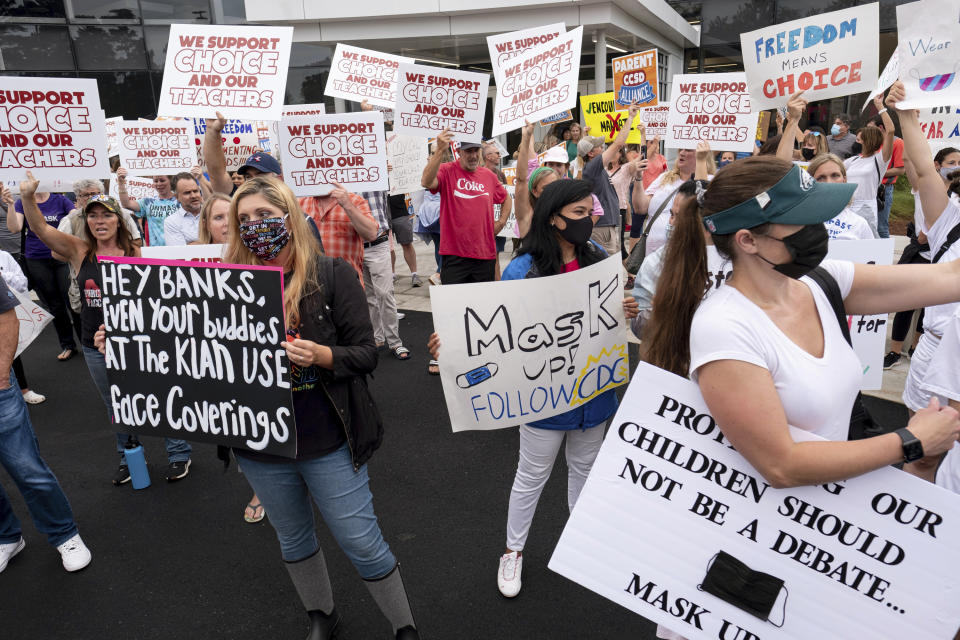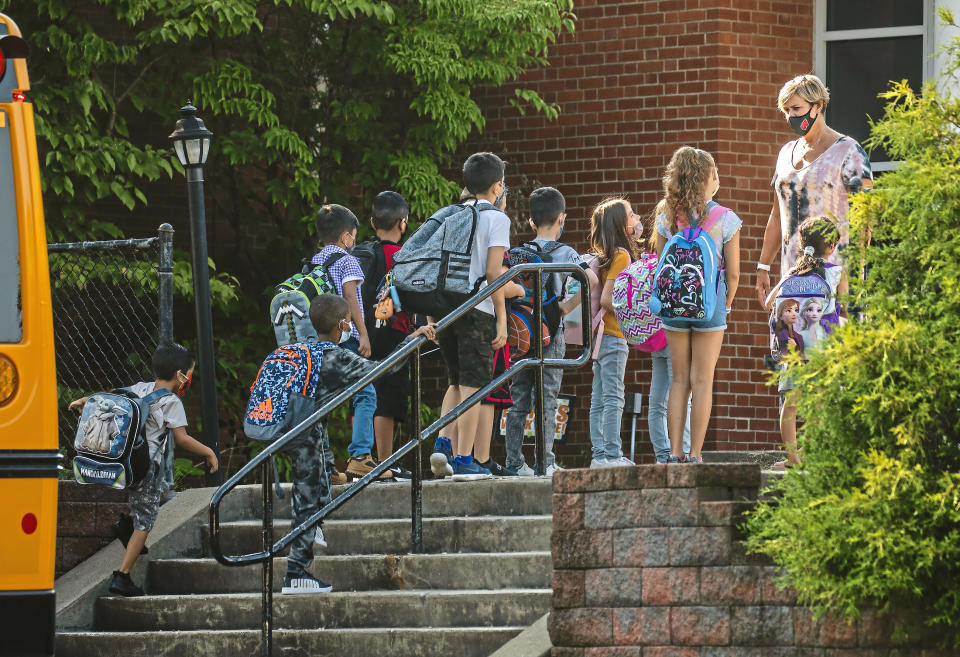EXPLAINER: What are current COVID-19 guidelines for schools?
ATLANTA (AP) — It's a back to school season like no other for students, teachers and parents across the U.S. Schools have opened nationwide this fall only to find thousands of students and their teachers sickened by the coronavirus.
That wasn't the long-awaited return to normality many had hoped for in resuming in-person instruction. Along with the surge in cases, districts have contended with angry parents, school board members and the public on the questions of mandated vaccines. Quarantine rules have changed. So have mask requirements. Confusion and distress abound.
So, what is going on in U.S. schools? The details differ from district to district, but here are some answers:
WHAT DOES THE CDC RECOMMEND ABOUT MASKS IN SCHOOLS?
The U.S. Centers for Disease Control and Prevention recommends everyone wear a mask in schools, regardless of vaccination status or local case levels.
WHAT ABOUT LUNCH? HOW ARE STUDENTS SUPPOSED TO PLAY THE SAXOPHONE?
Schools should have distancing plans for when people need to remove their masks indoors, the CDC says, such as while eating or during band practice.
I HAD CLOSE CONTACT WITH SOMEONE WHO HAD COVID-19. DO I HAVE TO STAY AWAY FROM SCHOOL?
If you're unvaccinated, the CDC wants you to get tested immediately and quarantine for up to 14 days. In some places, you can return to school sooner if you test negative. If you've recovered from COVID-19 in the last three months and have no symptoms, you don't have to quarantine. Same if you're fully vaccinated, but monitor for symptoms.
IF I TEST POSITIVE BUT AM FULLY VACCINATED AND NOT SHOWING SYMPTOMS, CAN I GO TO SCHOOL?
No. The CDC says that anyone with a positive test needs to isolate for at least 10 days, even if they’re not showing symptoms. Students and staff should only return to school at least 10 days after developing symptoms or receiving a positive test, and at least 24 hours since any fever has subsided without the use of medication and other symptoms have improved.
WHAT ABOUT FOOTBALL PRACTICE? THE SCHOOL PLAY?
Federal officials emphasize that people in quarantine or who are ill shouldn’t participate in sports practices or other extracurriculars.
OK, BUT WHAT COUNTS AS A CLOSE CONTACT? HOW FAR APART DO STUDENTS HAVE TO BE?
The CDC says generally that being within 6 feet (2 meters) of an infected person for a total of 15 minutes or more over a 24-hour period counts as close contact. But, over the summer, the agency made a special exception for K-12 students in classrooms. Encountering infected students within 3 feet (1 meter) and 6 feet (2 meters) doesn’t count, as long as everyone was masked up correctly. Teachers and other adults are not granted the same exemption.
WHAT DIFFERENCE DO MASK POLICIES MAKE FOR QUARANTINES?
A big one, potentially. Schools that mandate masks are now less likely to have to quarantine whole classrooms or large numbers of students when one person becomes ill — although some still are.
WHAT DO FEDERAL OFFICIALS SAY ABOUT REMOTE LEARNING PLANS?
Some districts have made few or no provisions to teach exposed or sick students remotely, but federal officials do advise them to provide remote learning options — even if that means sending home paper packets. Federal officials say they want districts to focus on maximizing in-person learning, but also make sure sure students have access to remote technology and good online instruction when that isn’t possible.
ARE DISTRICTS INTERPRETING THESE RECOMMENDATIONS DIFFERENTLY? IS THIS ALL JUST A SUGGESTION?
States and individual school districts aren't bound by CDC guidelines. Some states have standard policies they have imposed on all school districts, while others are allowing districts to make their own policies on everything from mask requirements to quarantine rules to remote learning policies.
CAN SCHOOLS REQUIRE COVID-19 VACCINES FOR KIDS WHO ARE OLD ENOUGH?
Again, depends where you live! At least nine states have explicitly said schools can’t require vaccination, including Alabama, Arizona, Arkansas, Indiana, Iowa, Montana, Oklahoma, Tennessee and Texas.
A number of states and individual districts are requiring teachers to get vaccinated, in some cases allowing them to opt out with regular testing for the virus. Earlier this month, the Los Angeles public school system became the first big district — it's the nation's second largest — to require all its students 12 and up to get vaccinated, while some other big districts are requiring students participating in sports and extracurriculars to get inoculated.
WHAT'S GOING ON WITH THE BUS DRIVER SHORTAGES? HOW DO KIDS GET TO SCHOOL?
Districts nationwide are suddenly short on bus drivers, on account of the tight labor market and fear of coronavirus infections. In Massachusetts, the state has even called out the National Guard to keep buses running.
___
AP writer Collin Binkley contributed from Boston.




